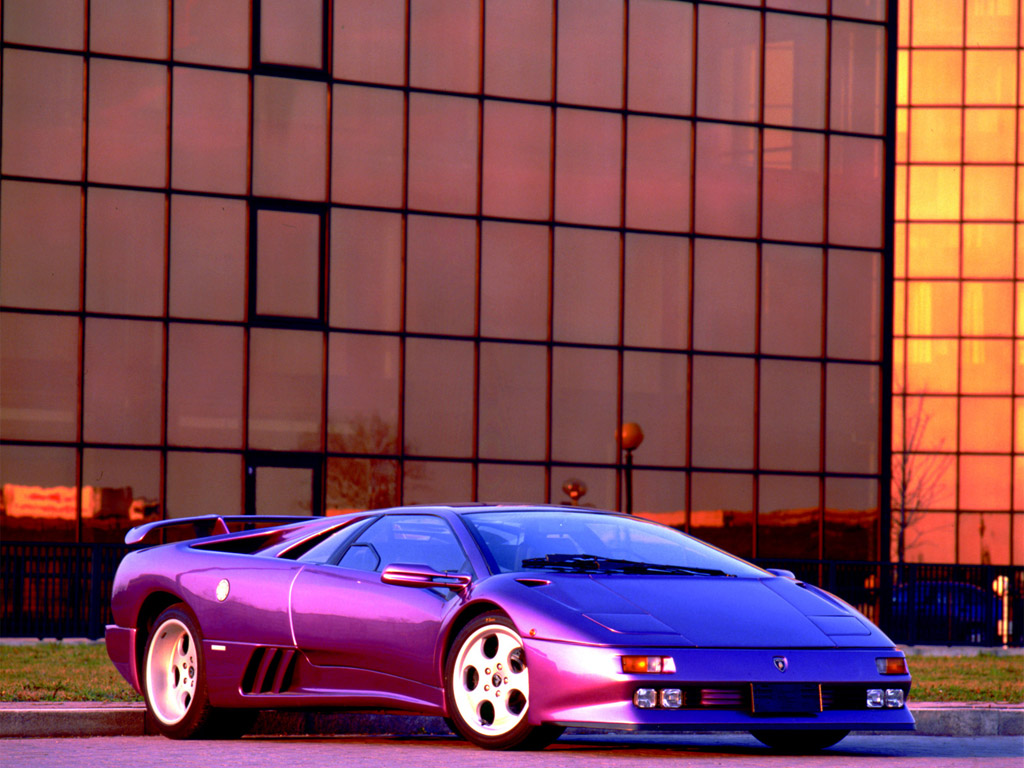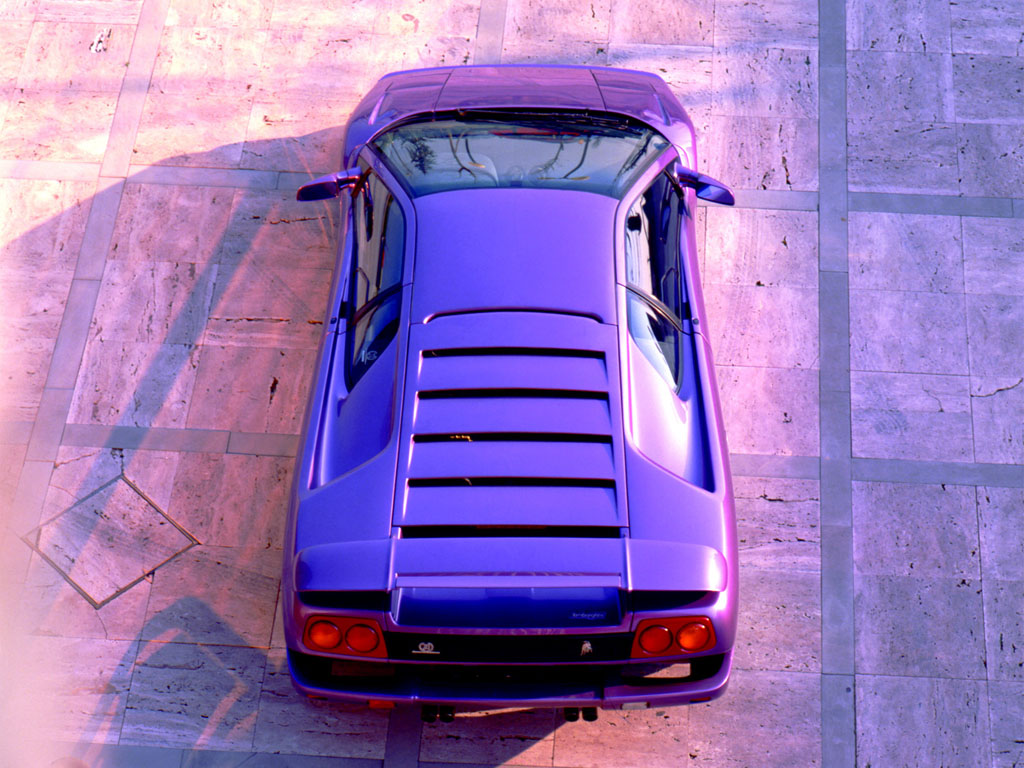1995 Lamborghini Diablo SE30
To celebrate Lamborghini’s 30th year as a road car manufacturer, a special edition Diablo called the SE30 was offered in 1993. Motivation for the series came from motor sport homologation and, upon release, a sister Jota car was presented which showcased the specific upgrades that made the SE30 suitable for GT-championship races.
This eligibility meant the SE30 was the sportiest supercar Lamborghini had made in quite some time: it reached 207mph (333 kph) flat out and 0-60 in four seconds. To obtain these figures, almost every aspect of the Diablo’s engineering was reconsidered.
Outwardly, the SE30 kept most of the standard Diablo lines except subtle details such as a deep front spoiler with supplementary driving lights, twin-duct side intakes, an engine hood which mimicked the one on the Miura supercar and ultra-light magnesium wheels. While most of the body remained in aluminum, these new pieces were constructed in carbon fibre.
Power to the 18 inch rear wheels was fed by an upgraded engine which used magnesium castings, modified cylinder heads, Lamborghini’s LIE electronic injection and a free-flow exhaust system. This meant the SE30 benefited from 525 bhp on tap and a weight reduction of 275 lbs (125 kgs). The only electronic aid which helped owners keep their sanity was a switchable traction control; gone was the automatic height adjustment, ABS and power assist steering.
Inside, the interior was purposeful and came Alcantara leather, carbon fiber accents, white dials and aluminum pedals. A four-point harness kept the occupants pinned in their highly-bolstered cabon fibre seats. With features like twin controls to adjust the rigidity of the front and rear anti-roll bars, the SE30 was a serious contender. Unforgiving upgrades such as fixed Plexiglas windows, no air conditioning, radio delete and an automated fire extinguisher system only reinforced its enthusiast nature.
Unfortunately, the original motorsport intent for the SE30 never took off. Around 150 examples were made and less than 15 came with Jota upgrades. The last car was constructed in Novemeber of 1995 and went to a middle-east dealer with white bodywork.
In Detail
| submitted by | Richard Owen |
| price $ | $200 000 USD |
| engine | 60o V12 |
| valvetrain | DOHC 4 Valves / Cyl |
| displacement | 5707 cc / 348.3 in³ |
| bore | 87.0 mm / 3.43 in |
| stroke | 80.0 mm / 3.15 in |
| compression | 10.0:1 |
| power | 391.5 kw / 525.0 bhp @ 7000 rpm |
| specific output | 91.99 bhp per litre |
| bhp/weight | bhp per tonne |
| torque | 580.0 nm / 427.8 ft lbs @ 5200 rpm |
| body / frame | Aluminum Alloy & Composite Materials |
| driven wheels | Mid Engine / RWD w/Traction Control |
| wheel type | Magnesium Compound OZ Racing |
| front tires | 235/40ZR-17 |
| rear tires | R P335/30ZR-18 |
| front brakes | Brembro Vented Discs with no ABS |
| f brake size | x 330 mm / x 13.0 in |
| rear brakes | Vented Discs |
| r brake size | x 284 mm / x 11.2 in |
| front wheels | F 43.2 x 21.6 cm / 17.0 x 8.5 in |
| rear wheels | R 33.0 x 45.7 cm / 13.0 x 18.0 in |
| steering | Unassisted Rack & Pinion |
| curb weight | 1451 kg / 3199 lbs |
| wheelbase | 2650 mm / 104.3 in |
| front track | 1540 mm / 60.6 in |
| rear track | 1640 mm / 64.6 in |
| length | 4460 mm / 175.6 in |
| width | 2040 mm / 80.3 in |
| height | 1105 mm / 43.5 in |
| transmission | 5-Speed Manual |
| gear ratios | 2.31:1, 1.52:1, 1.12:1, 0.88:1, 0.68:1, :1 |
| final drive | 2.41:1 |
| top speed | ~333.0 kph / 206.9 mph |
| 0 – 60 mph | ~4.0 seconds |








